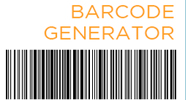 I’ve always felt that there is a time and place for everything. There has recently been massive growth in Data Matrix barcode use among manufacturers for traceability purposes, so I decided that the time to address the four reasons why this is occurring is now!
I’ve always felt that there is a time and place for everything. There has recently been massive growth in Data Matrix barcode use among manufacturers for traceability purposes, so I decided that the time to address the four reasons why this is occurring is now!
4 Reasons Why Data Matrix has taken over the Manufacturing World:
1. Size
Data Matrix barcodes are being utilized because they have a very small footprint. They can be read down to 2.5 mil by a Standard Range (SR) or High Density (HD) barcode scanner (such as Honeywell’s Xenon 1900). Another popular implementation is a Cognex, Microscan or Keyence vision system, which enables the user to take pictures of barcodes product and arrays. This is another accurate, efficient and quick process utilized in batch manufacturing or for high levels of throughput.
2. Information
Data Matrix barcodes enable the user to include up to 500 characters of information, which is ten times the amount that can be included in a linear barcode. Even though the same amount can be included in a PDF barcode, Data Matrix barcodes are much smaller, making them much more appealing to the manufacturing arena.
3. Implementation
There are three major types of implementation used at this time.
- The first includes a barcode label, which can be as minute as .125”high x .25” wide. This is a great application method for any instance where the product isn’t in direct contact with chemicals, water, soldering material, dust and other extreme environmental factors.
- The second method of implementation is Direct Part Marking (DPM), which enables the user to directly mark each product permanently with a raised data matrix barcode. Although this is a more expensive process, it is the most reliable since it isn’t affected by any environmental or production elements that could destroy it. The raised barcode also makes it easier to read, since the surface distinguishes itself from the product.
- The third method is laser marking, which provides an economical option to Direct Part Marking. The accuracy, reliability and permanency are similar and this implementation isn’t affected by any environmental or production elements that could destroy it. The one downside I can see is that since the barcode isn’t raised, the readability isn’t always as good as it is with a DPM barcode.
4. Placement
Due to the size of a Data Matrix barcode, there is a great deal of flexibility for placement of the barcode on the product. Space is limited, so the ability to work around resistors, capacitors, customer placement requirements, etc. is critical.
 Click to create your own data matrix barcode with our online barcode generator!
Click to create your own data matrix barcode with our online barcode generator!
If you have any questions about what you have read or require application assistance, please reach out to me via phone at 800-830-9523, x. 126 or via email at Jeremy.Miller@L-Tron.com.
About the Author:
 Jeremy Miller is L-Tron’s Industrial Automation and Advantech Product Specialist. Jeremy is highly trained and brings over 10 years of experience in the industrial control,data acquisition and test & measurement markets. Jeremy holds Advantech certifications in: Industrial Platform, Industrial Operator Panel, Automation Controller &I/O, Industrial Communication, & Automation Software. Jeremy can be reached at(800)-830-9523 ext 126; jeremy.miller@L-Tron.com
Jeremy Miller is L-Tron’s Industrial Automation and Advantech Product Specialist. Jeremy is highly trained and brings over 10 years of experience in the industrial control,data acquisition and test & measurement markets. Jeremy holds Advantech certifications in: Industrial Platform, Industrial Operator Panel, Automation Controller &I/O, Industrial Communication, & Automation Software. Jeremy can be reached at(800)-830-9523 ext 126; jeremy.miller@L-Tron.com













